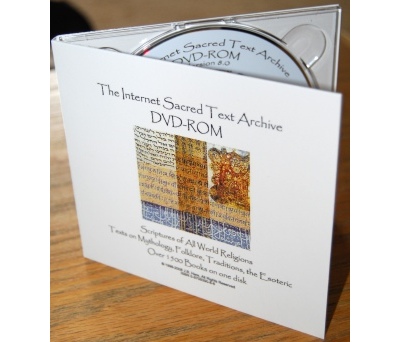Sacred Texts
Sacred-texts home
Confucianism
Taoism
Prophecy and Divination
Buy CD-ROM
Buy books about I-Ching

|
I Ching
|
 The I Ching
The I Ching
James Legge, tr.
Sacred Books of the East, vol. 16
[1899]
Contents
Start Reading
The I Ching, or Book of Changes, is the most widely read of the five
Chinese Classics.
The book was traditionally written by the legendary Chinese
Emperor Fu Hsi (2953-2838 B.C.). It is possible that the
the I Ching originated from a prehistoric divination technique which
dates back as far as 5000 B.C. Thus it may be the oldest text at this site.
Futher commentaries were added by King Wen and the Duke of Chou in the
eleventh century B.C.
An I Ching interpretation is performed by making
six binary decisions (a hexagram). This is called 'casting the I Ching'.
These are written down as a stack of six solid or broken lines.
This was traditionally done either by tossing yarrow
stalks or coins, although there is no reason why
the hexagrams can't be generated by some other means
(such as a computer program).
There are actually four possible values for each of the lines; the two
on/off values, and a line which changes from on to off or vice versa.
Thus one cast of the I Ching can generate two different hexagrams,
which adds depth to the interpretation.
The sophistication of this method has not escaped modern interpretation,
and the four-valued logic has been compared to the biochemistry of
DNA amino acids.
How a Neolithic shamans' divination technique
presaged the basic logic of the human genome is one of the ageless mysteries.
Production Notes:
This is a complete overhaul of the Legge I Ching etext, with all of the
original illustrations.
This utilizes Unicode characters
throughout to represent the 'short A' and the 'Yodh' found in the original book.
Because not all browsers support the official Unicode 'Yodh'
(Ȝ and ȝ),
we have used Ž and ž to represent it.
In addition, we have used images to present the dozen or so Chinese
characters in this text.
Title Page
Contents
Preface
Introduction
Chapter I: The Yî King from The Twelfth Century B.C. to the Commencement of the Christian Era
Chapter II: The Subject-Matter of the Text. The Lineal Figures and the Explanation of Them
Chapter III: The Appendixes
Plates
Plate I
Plate II, Figure 1
Plate II, Figure 2
Plate III, Figure 1
Plate III, Figure 2
The Yî King Text: Section I
I. The Khien Hexagram
II. The Khwăn Hexagram
III. The Kun Hexagram
IV. The Măng Hexagram
V. The Hsü Hexagram
VI. The Sung Hexagram
VII. The Sze Hexagram
VIII. The Pî Hexagram
IX. The Hsiâo Khû Hexagram
X. The Lî Hexagram
XI. The Thâi Hexagram
XII. The Phî Hexagram
XIII. The Thung Zăn
XIV. The Tâ Yû Hexagram
XV. The Khien Hexagram
XVI. The Yü Hexagram
XVII. The Sui Hexagram
XVIII. The Kû Hexagram
XIX. The Lin Hexagram
XX. The Kwân Hexagram
XXI. The Shih Ho Hexagram
XXII. The Pî Hexagram
XXIII. The Po Hexagram
XXIV. The Fû Hexagram
XXV: The Wû Wang Hexagram
XXVI. The Tâ Khû Hexagram
XXVII. The Î Hexagram
XXVIII. The Tâ Kwo Hexagram
XXIX. The Khan Hexagram
XXX. The Lî Hexagram
Text Section II
XXXI. The Hsien Hexagram
XXXII. The Hăng Hexagram
XXXIII. The Thun Hexagram
XXXIV. The Tâ Kwang Hexagram
XXXV. The Žin Hexagram
XXXVI. The Ming Î Hexagram
XXXVII. The Kiâ Zăn Hexagram
XXXVIII. The Khwei Hexagram
XXXIX. The Kien Hexagram
XL. The Kieh Hexagram
XLI. The Sun Hexagram
XLII. The Yî Hexagram
XLIII. The Kwâi Hexagram
XLIV. The Kâu Hexagram
XLV. The Žhui Hexagram
XLVI. The Shăng Hexagram
XLVII. The Khwăn Hexagram
XLVIII. The Žing Hexagram
XLIX. The Ko Hexagram
L. The Ting Hexagram
LI. The Kăn Hexagram
LII. The Kăn Hexagram
LIII. The Kien Hexagram
LIV. The Kwei Mei Hexagram
LV. The Făng Hexagram
LVI. The Lü Hexagram
LVII. The Sun Hexagram
LVIII. The Tui Hexagram
LIX. The Hwân Hexagram
LX. The Kieh Hexagram
LXI. The Kung Fû Hexagram
LXII. The Hsiâo Kwo Hexagram
LXIII. The Kî Žî Hexagram
LXIV. The Wei Žî Hexagram
The Appendixes
Appendix I
Section I
Section II
Appendix II
Section I
Section II
Appendix III: The Great Appendix
Section I
Section II
Appendix IV
Section I
Section I: Khien
Section II: Khwăn
Appendix V
Appendix V: Treatise of Remarks on the Trigrams
Appendix VI
Appendix VI: The Orderly Sequence of the Hexagrams
Appendix VII
Appendix VII


